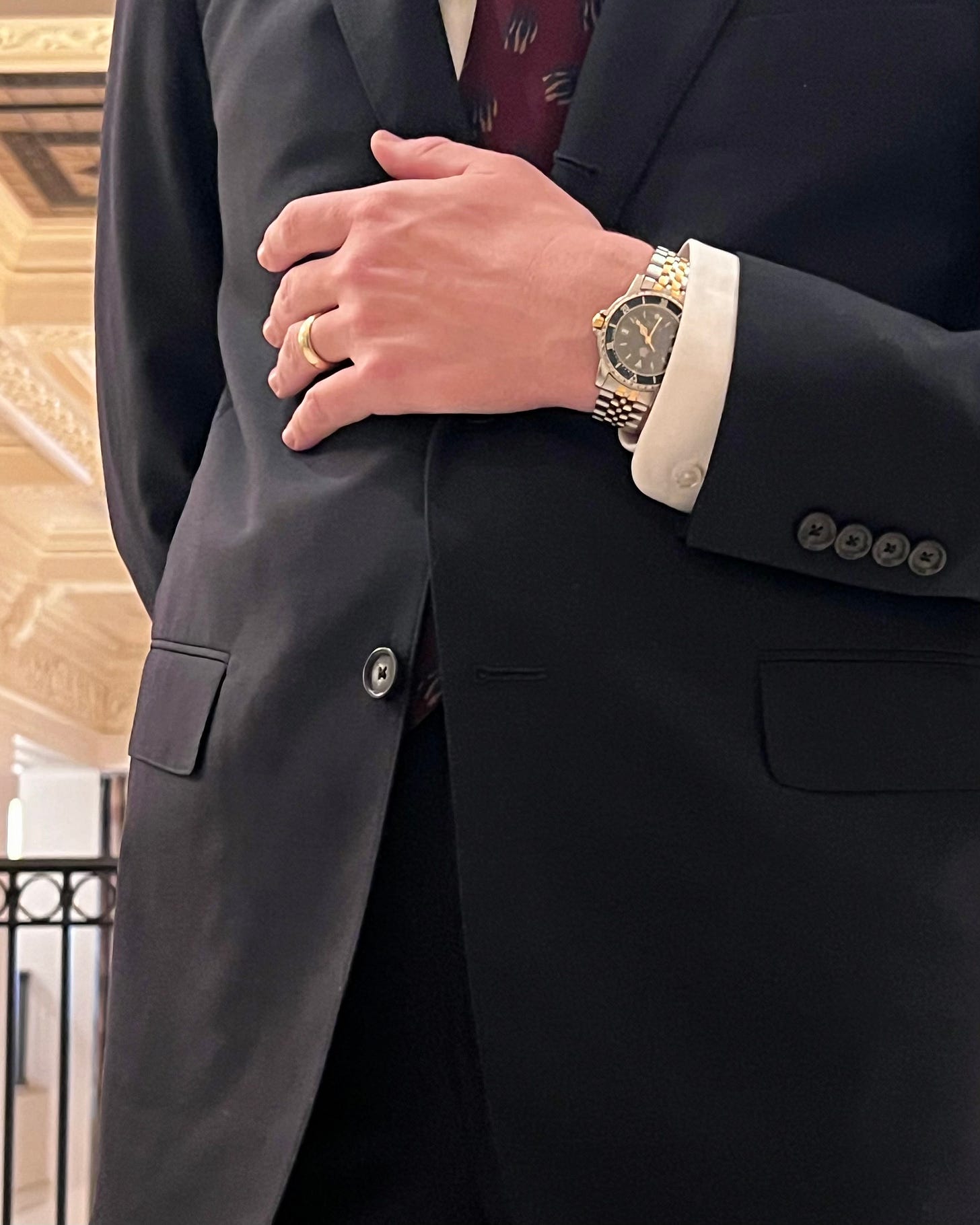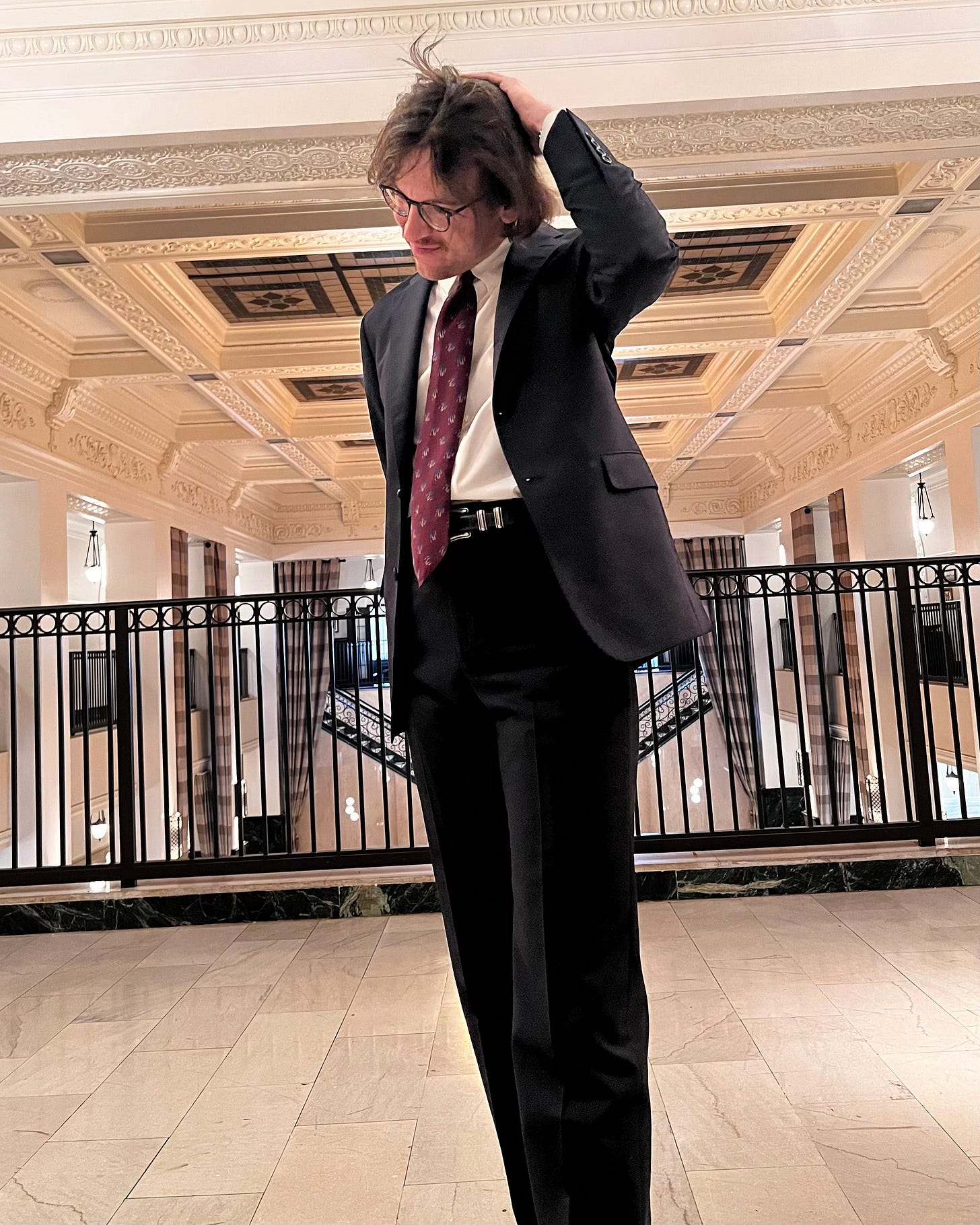My Back Pages, March 2025
Suiting, Tulsa, and Dan Bejar
Welcome back to My Back Pages, a monthly digest of all the goods fit to print
I’m writing a few days on from a trip to beautiful Tulsa, Oklahoma.
I was there with Evan and Steve for our inaugural Jokermen/Never Ending Stories corporate retreat, which took place on the occasion of Bob Dylan’s first show (and concert) of the year. I’ve already expounded at length on this aspect of the trip—on our immediate post-show episode of Never Ending Stories; on Ray Padgett’s Flagging Down The Double E’s wrap-up; and on this very Substack, where I indexed all the best and weirdest shit at the Bob Dylan Center—but I was also struck by the city of Tulsa itself.
I stayed at The Mayo, a grand 1925 hotel that’s hosted everyone from Charlie Chaplin to Elvis to Dick Nixon. Downtown is packed with these century-old skyscrapers, beautiful Art Deco and Gothic Revival specimens that have been well-maintained (if not well-let). It was a delight to wander in and around them, marveling at ornate details: brick towers topped with intricate masonry, empty payphone enclaves carved out of marble, angular chandeliers suspended from golden chains.
Tulsa exploded in the early 20th century with the discovery of enormous reservoirs of “Black Gold” all across Oklahoma. The city became the nexus of a vast system of extraction that extended throughout the state: oil was pumped out of the ground and, through the magic of the market, converted into capital, which flowed to the imperial core. By the 1920s, Tulsa was known as “The Oil Capital of The World.”
Tulsa’s downtown core will feel instantly familiar to anyone who’s walked down Broadway in Downtown Los Angeles. Both cities boomed at the same time, so their built environments share common DNA. The Orpheum, the United Artists Building, and the Eastern Columbia would all fit right in to the city’s skyline. The difference, of course, is that there’s still a lot of money in Los Angeles, and, consequently, a lot of people. Tulsa has been drained of both, a totally tapped out well.
The title of “Oil Capital of The World” has long since shifted out of America, or at least out of Oklahoma. The USA may still be the world’s leading producer of oil, but the wealth it produces is conspicuously missing, squirreled away in byzantine bank accounts belonging to shell companies that may or may not exist. Twenty-first century Tulsa is haunted by its absence.
It gives the city’s downtown a bracing post-apocalyptic edge: all the spoils of capitalist excess, and no one to enjoy them. Oilmen and their offices, coffee shops and convenience stores, trains and busses to move the masses from Osage Nation to the Panhandle and back again: consumed, combusted, gone—like they never even existed.
But the buildings are still there. Brick stands the test of time.
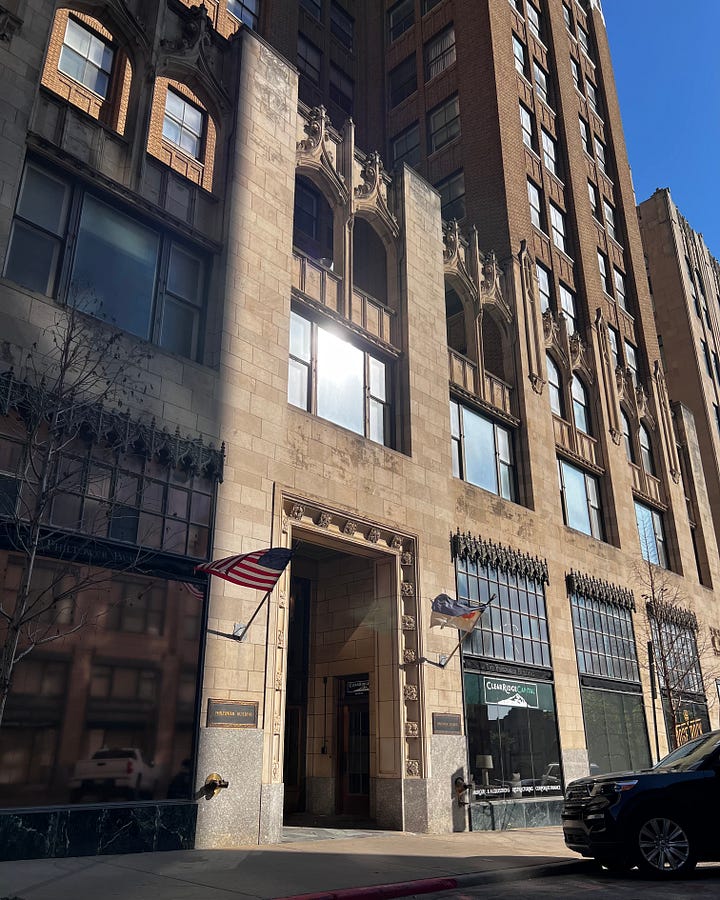
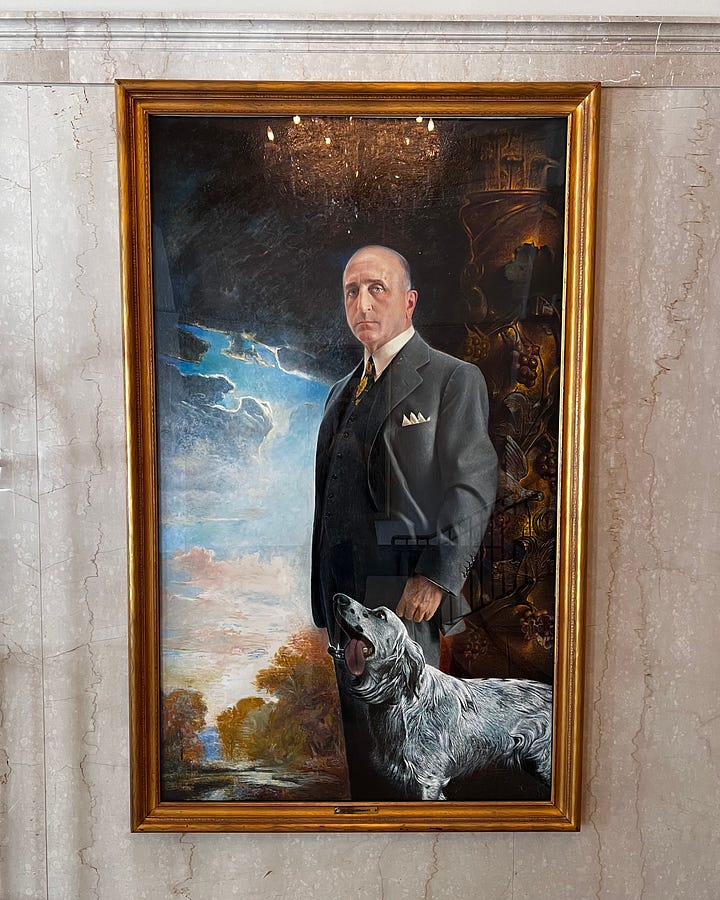
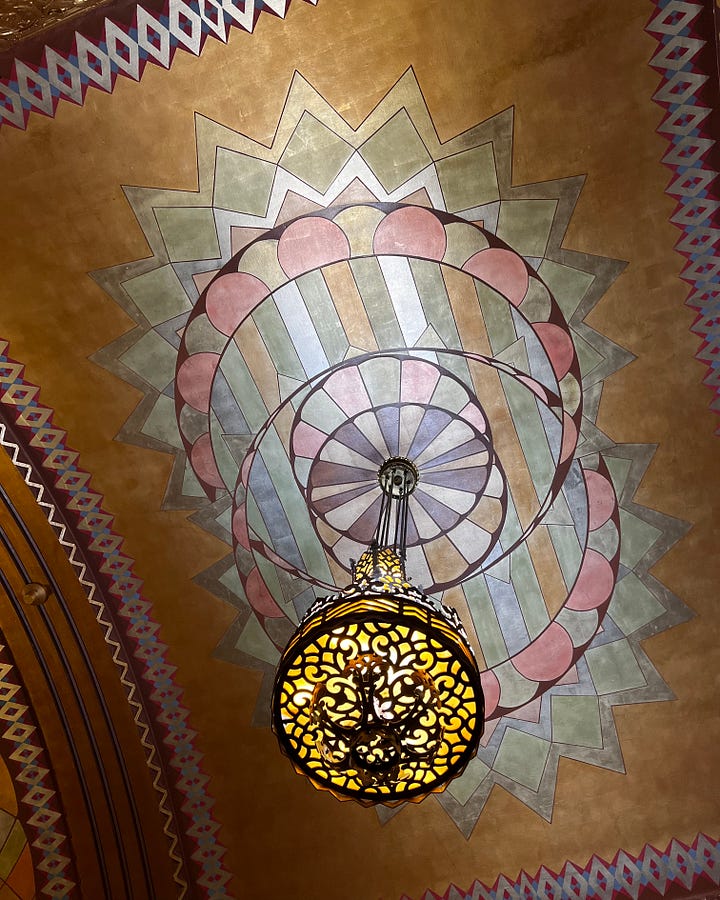
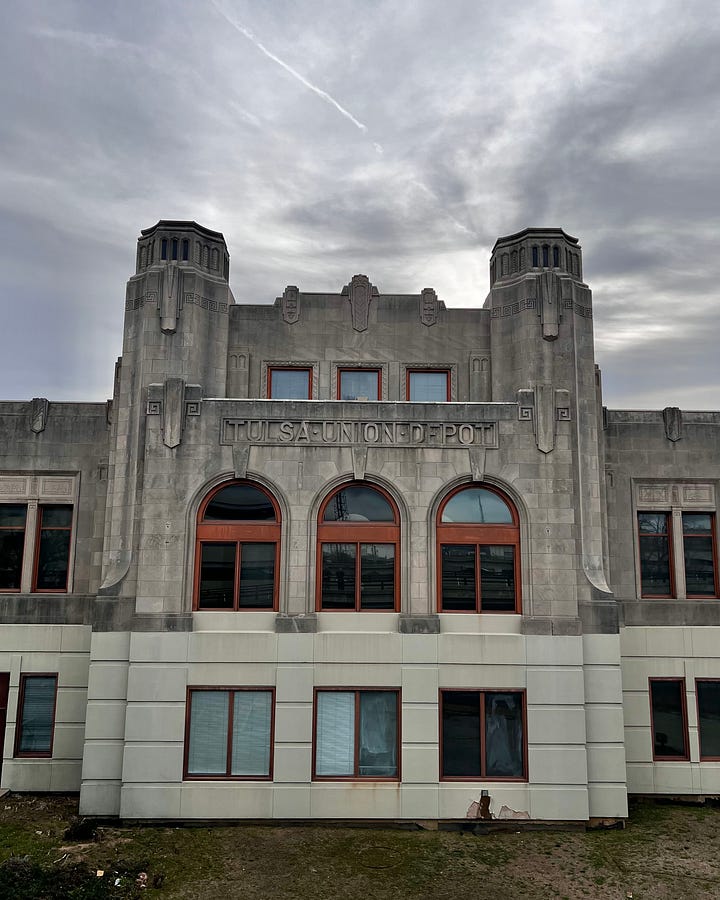
Fit Check
I wore this on Tuesday, March 25th.
I wanted to get dressed up for Bob. It just felt right. I don’t know how many more times I’ll get to see him, so it’s best to make them all count.
I also enjoy wearing tailoring. I don’t have many reasons to do so in my day-to-day to life, which mostly consists of sitting at my desk, making coffee, and walking my dog. When the opportunity presents itself, I try to take advantage. As long as you can do it well, wearing a suit is a lot of fun.
I’m doing it reasonably well here, I think. I’m a bit wider than I was when I had this suit tailored last year, but the generous cut gives me a little (though not too much) margin for error.
The suit is from a store called O’Connell’s, a small outfit out of Buffalo, New York. Established in 1959, O’Connell’s sells the exact same items they have for 60+ years: sports coats, high-waisted trousers, sack suits, and the like. Don’t fix what ain’t broke.
Almost everything O’Connell’s sells is made in the USA. Where something comes from doesn’t necessarily imply how well-made it is, but the higher cost of American manufacturing is indisputable. This reality speaks to the philosophy behind the business. O’Connell’s isn’t interested in name recognition, market share, and growth at all costs. It does what it does, it does it well, and most importantly, it doesn’t do more than that. It is sustainable, a quality anathema to most contemporary businesses.
It also makes beautiful clothes, like this suit: navy blue, worsted wool, three roll two. Soft, unpadded shoulders. Moderately wide notch lapels. Single vent. Flap pockets. Full trousers that sit at the waist. In short, the one suit every man should own.
There are four buttons on the end of the sleeves, which is as many as you’ll ever find. Generally speaking, more buttons equals more formal, but suiting is so foreign these days that you’ll look “dressed up” to most people even in one- or two-button sleeves. The four-button sleeves on this rig allow me to wear it in even the most formal circumstances without worrying than a fellow menswear guy will mentally dress me down for a lack of decorum.
I’m also wearing my Tag Heuer watch, which my father bought for himself during his high-flying days as a CPA in the 1990s. On my twenty-first birthday, he passed it down to me. I look forward to doing the same twenty-something years from now.
I’m not a watch guy (yet), so I don’t really know much about it, but it’s important to me on a personal level. Best of all, its links are both silver and gold, allowing me to mix metals across an ensemble: note my gold wedding ring above, and the silver hardware of my ranger belt below.
It’s the perfect finishing piece for a more formal look like this. It means something to me to wear it in a way no other watch ever will.
I wore the ranger belt as a casual nod to Oklahoma’s country-western flavor.
Over the past several decades, the kind of clothes sold at O’Connell’s have come to be associated with “trad” style, a fussy, pseudo-reactionary movement that prioritizes strict adherence to a fixed set of rules above all else. Many of these rules may be worth following, but style isn’t about following instructions. Dressing well shouldn’t feel like homework.
As I said, wearing a suit should be fun. A lot of that fun comes from mixing and matching pieces in an idiosyncratic, personally significant way. There are some rules you always want to abide: navy socks with a navy suit, tie tip touching the waist, no shirt peeking out beneath the fastening point of a jacket. Other rules are fun to bend and break. Who says you can’t wear a western belt with classic tailoring?
The button-down collar of my shirt is a hallmark of Ivy style, the look (supposedly) popularized on American campuses in the 1950s and 60s. Setting aside Ivy’s contested history—as W. David Marx explains in Ametora, the Ivy look was imagined as much as it was actually practiced—the button-down collar has come to be associated with a quiet, casual Americana I appreciate and try to express.
I paired the shirt with a vintage Armani tie from the mid-90s, a golden age (the last?) for American tailoring. At about 4.25”, it’s on the wider side, as it should be. The kitschy print is balanced out by dark, dramatic colors. It’s fun, but not too fun.
It is 100% silk, and I got it for about $10 on eBay. Buy your ties on eBay.
It is tied with a four-in-hand knot, which is the only type of knot you should ever use (this is another one of those rules you don’t want to break).
Bylines & Appearances
The release of a new Destroyer record is always something worth celebrating, so I was stoked to write up the latest, Dan’s Boogie, for Aquarium Drunkard. I’ve said it many times before, but it doesn’t stop being true: Dan Bejar is the closest thing to Bob Dylan (besides Bob Dylan) we have today. The new record synthesizes everything he’s done over the last decade while simultaneously pointing ahead toward something new. It’s dense, delirious, and catchy as hell. Easily the record of the year for me (so far, anyways).
I also popped up one last time in the A Complete Unknown discourse cycle with a few thoughts on Timothée Chalamet’s “Freewheelin’ Press Tour Fashion.” This already feels like a million years ago, especially since ACU came away with exactly zero awards on Oscar night, but it was all good news for my bottom line. Thanks again to Timmy and James “Silvio, Silver and” Man-Gold.
Pods
Free Stuff
We’re into the deep end up with The Beach Boys now folks. See “It’s OK,” the preposterous 1976 television special (produced by Lorne Michaels??) that served as the culmination of the ill-advised “Brian’s Back!” marketing scheme. We broke down the whole thing, as well as Brian’s first go-round with Dr. Eugene Landy, in our IT’S NOT OK episode.
We were also joined by the great Matt Farley for an episode on the Beach Boys record I love more than any other: LOVE YOU. An unvarnished looked at the heart and soul of a madman artist—Brian Wilson’s Blood On The Tracks. The record we were born to podcast about.
Stuff You Have To Pay For
It was another banner month on Never Ending Stories. We posted two of our best interviews yet back-to-back during the same week: one with Benmont Tench talking everything from John Wesley Harding to Locarno ‘87 to his playing on “Murder Most Foul,” and another with Bejar talking his record, his love of Tempest, and a hypothetical Sinatra covers record from Destroyer.
We also fell ass-backwards into a miniseries looking at some of the weirdest, deepest-of-deep-cuts live appearances from Bob, including a 1994 performance with the Tokyo Philharmonic Orchestra and an absolutely dogshit set at Phil Ochs’ 1974 Chile benefit concert.
Over on Jokermen, we concluded our Love You extravaganza with a bonkers B side episode in which we discussed the ballad of Rushton “Rocky” Pamplin. We also hit 15 Big Ones, a record that doesn’t quite live up to its title.




